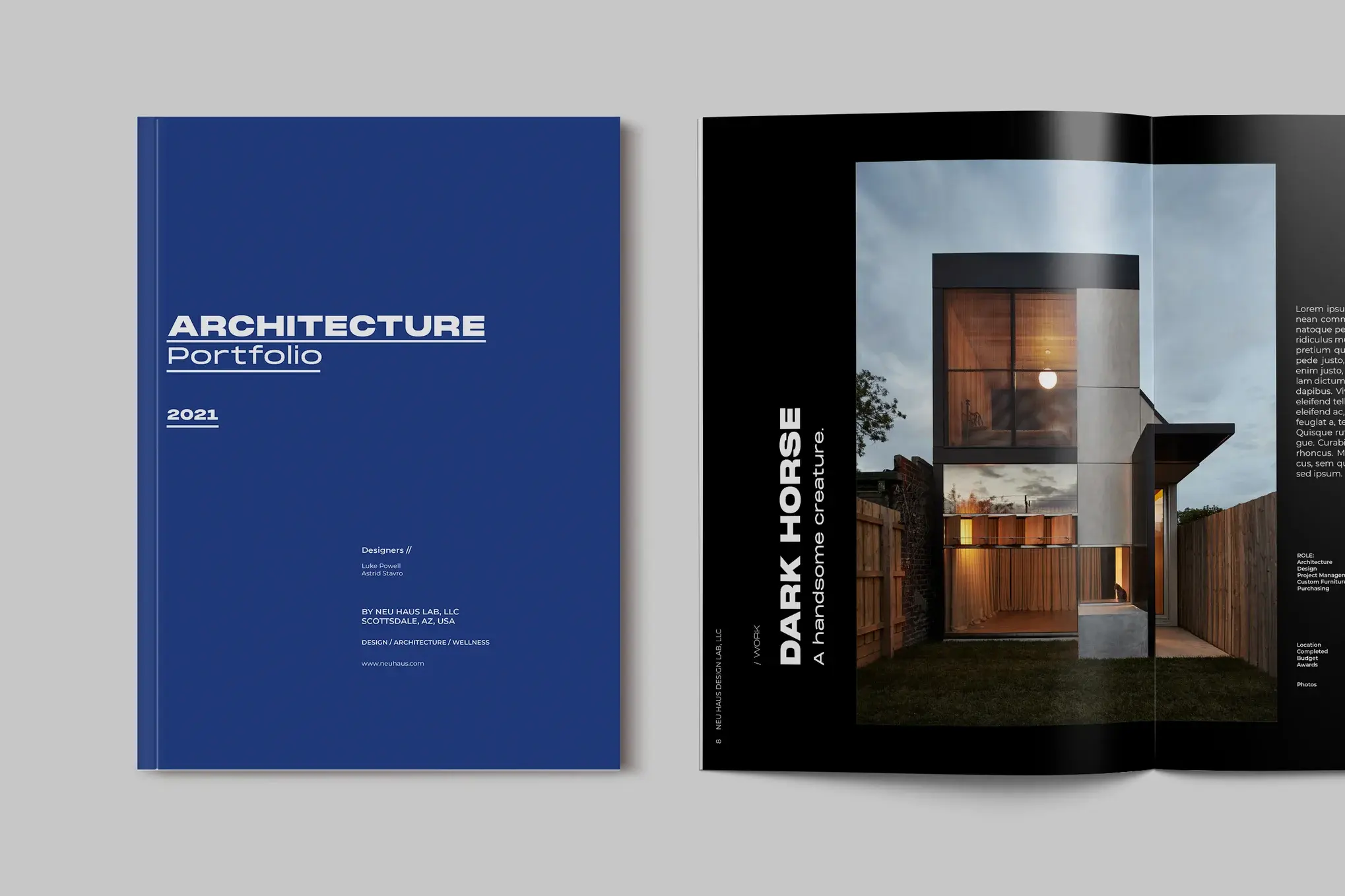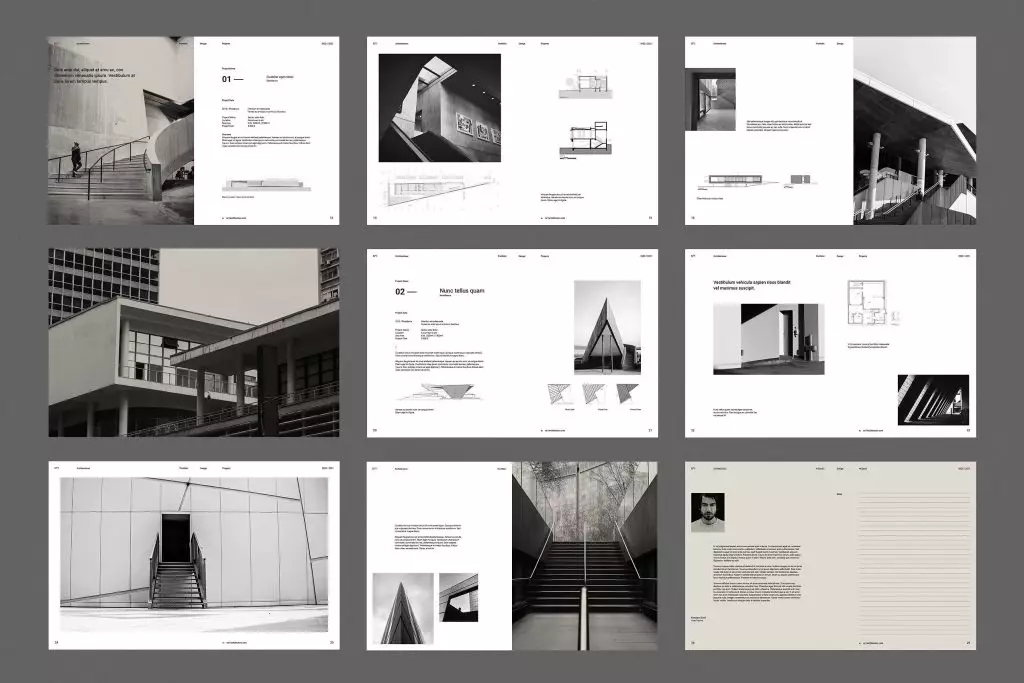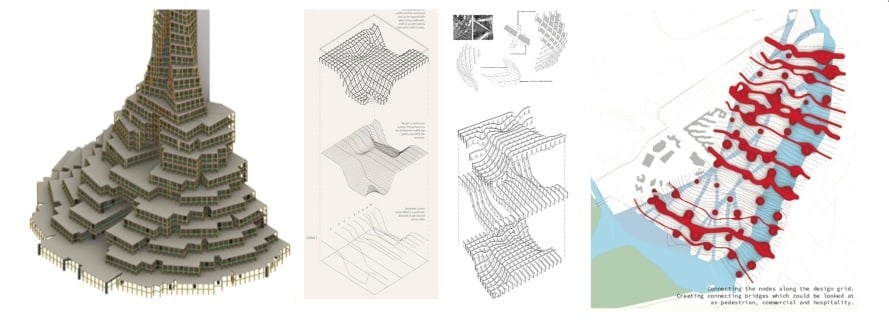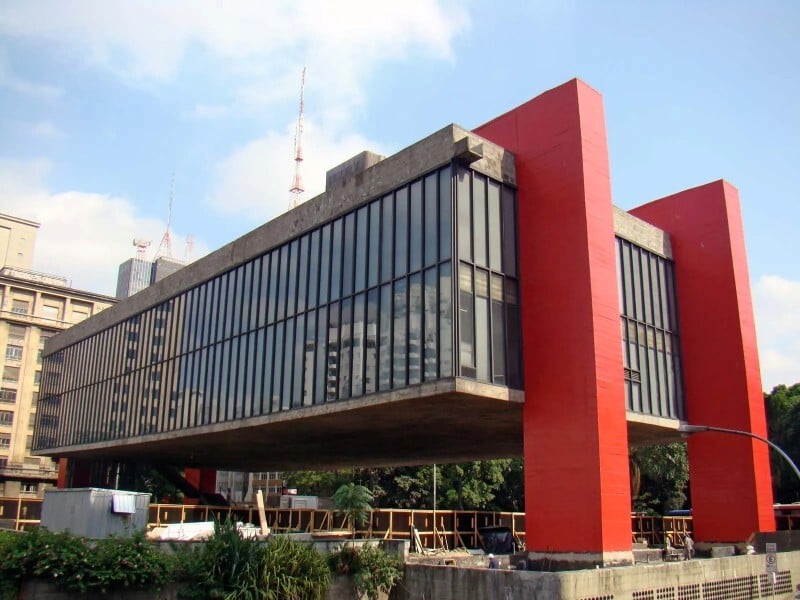
An architecture portfolio is the first topic of conversation with a firm. Whether you are applying to a small firm in Japan or a large multidisciplinary firm in Dubai, your portfolio should demonstrate how you can contribute to the firm. Ultimately, this is the defining factor in the hiring process. It’s nearly impossible to get a good job opportunity without a strong portfolio, even if you have a master’s degree.
Debunking the Myth of the Master's Degree
The craze for more academic milestones on resumes among young architects has created an illusion or a myth that having a master’s degree ensures a good job and/or pay. Many junior-level architecture jobs don’t require a master’s degree at all. In reality, you may still be stuck at a junior level even if you have an M.Arch degree, but without relevant experience and skills.
Some architects believe that M.Arch programmes will prepare them for any architectural job. However, M.Arch courses focus more on design theory and exploration, and less on technical tools, workflows or processes used in real-life practice. This is why senior architects grumble that new graduates aren’t equipped for the workforce!
Ask any principal at any architecture firm around the world. They prioritise project experience, both on and off-site, software proficiency and a strong portfolio far more than academic qualifications. That means a strong B.Arch with relevant skills in – let’s say, BIM, Rhino or Revit – can be just as competitive.
But, understandably, having these skills isn’t enough. You need to be able to demonstrate them. And how can you do that? With a strong portfolio.
Understanding the Purpose of Your Portfolio
An architectural portfolio tells the story of your works and of who you are as the designer behind them. A portfolio isn’t an archive to throw in all the work you have completed over the years; you should review and choose your best work for the portfolio. It illustrates your skills, academic and/or work achievements and interests that you discuss in your resume through the creative designs. The aim of having a fantastic portfolio is to make sure the hiring manager can identify you as a fitting candidate for the role.
Why do you need a fantastic portfolio? Let me reiterate – a portfolio is not an archive, nor is it a report. With no tangible product or design, employers get to take a glimpse into your design approach and thought process through your architectural portfolio. It shows your problem-solving skills, attention to detail, creativity and technical skills, helping employers evaluate if you are a good fit for the role and the firm.
Essential Components of a Global-Standard Portfolio
World-class opportunities require a world-class portfolio that is crafted to impress any top firms around the world. An architecture portfolio template should have these common components, but it’s up to you to make it detailed and eye-catching.

Credit: Yavanikaa Sindhu
Cover Page
It’s in our nature to judge anything at first impression. In architecture portfolios, cover pages should immediately catch the eyes of the recruiter and make them feel curious to look through. Don’t just write your name on the cover page!
Also read: Top 12 Architecture Portfolio Examples 2025
Resume and/or Personal Statement
You can choose to include a short resume or a personal statement sharing your design philosophy or interest in design. Tell your potential employer more about yourself in a professional way.
Projects with Process
This is the main section of your portfolio. Ideally, there should be 3-5 well-documented projects with conceptual diagrams, technical drawings and 3D models. If you have any impressive physical models, be sure to include them.
Details: Construction/Technical Drawings
Every architecture graduate knows these words: “God is in the details”. Details in technical drawings give life to the design, quite literally, as they show how the project will be built in real life. Employers want to know you are good at both design and construction comprehensively.
Diagrams for Soft Skills and Design Thinking
The trickiest part of curating an architecture portfolio is figuring out how to highlight soft skills. Often, architects focus on including only the final design outcomes. But, they don’t tell the full story. Explain your design process with diagrams and short texts to discuss how you interpret the brief. Talk about constraints you faced and other factors that influenced the project.

Credit: Yavanikaa Sindhu
Read more: 12 Architecture Portfolio Tips to Make Your Application Stand Out
Diverse Project Types and Skills in Architecture Portfolios
Architecture is multidisciplinary. And project diversity in an architecture portfolio speaks volumes about your skills and adaptability in design. Include a variety of typologies – residential, commercial, hospitality, etc, of both built and unbuilt conceptual works. Use projects that show a range of skills. Focusing too much on concept-heavy academic work is not encouraged, however. In real life, architecture is all about functionality. Hence, projects that bridge creativity with practical problem-solving are better.
Leveraging Technology and Digital Tools
We are already living in the age of AI. If you are not digitally skilled, you are lagging far behind.
Knowing just Autodesk AutoCAD and SketchUp isn’t enough anymore. Include projects done in Revit or ArchiCAD, or better yet, BIM workflows, and advanced 3D modelling in Rhino and Grasshopper. Visualisation is also important; Enscape, V-ray and Lumion are some of the most popular visualisation tools employers look out for.
Tailoring Your Architecture Portfolio for International Opportunities
Just like how you are encouraged to tailor your resume to the role, you may have to do the same for your portfolio. Find out more about the firm and the work they do. This Reddit post perfectly discusses what employers are looking for in architecture portfolios. As one user puts it, “They all want something different“. However, there is a common answer: a portfolio that easily communicates the design ideas with details.

Continuous Learning and Professional Development
Continuous learning is a must for architects. There are new technologies, new systems and materials being developed every day. It is important to stay updated with industry trends, and your portfolio should reflect that. Take up certification courses in LEED, BIM or parametric design, and update your portfolio with new projects. Showing growth, especially with industry-relevant skills, makes you a more attractive candidate in the competitive international market.
Also read: 5 Effective Tips To Create An Impressive BIM Portfolio That Will Help You Land A Great Job
How Novatr Enhances Your Portfolio With Industry-Relevant Skills
If you are looking for industry-relevant courses to upskill, you’ve come to the right place. Our BIM Professional Course for Architects equips learners with one of the most sought-after skills in the industry, along with a strong portfolio that showcases advanced modelling and BIM architectural workflows. You will be exploring state-of-the-art tools to create impressive projects from start to finish. The capstone project is RIBA and ISO certified, making it a must-have in portfolios.
Conclusion
Here’s a bitter truth: having a master’s degree doesn’t guarantee better jobs or pay. The difference between those who land better job opportunities and those who don’t often come down to strategic presentation in their architecture portfolios.
Your architecture portfolio is both a design work and a business tool; invest the same effort and intentionality in it as you would in other design work. Start on your portfolio today, whether you are making a new portfolio or refining an existing one. Your future self will thank you for it.
For more portfolio and career development tips, check out our Resources page.
FAQs
1. Is it possible to build a professional architecture portfolio without a Master’s degree?
Yes, absolutely! Many successful architects have built a portfolio with just B.Arch. The strength of your portfolio lies in the quality of your work, design approach and skills.
2. How can I ensure my portfolio meets global standards?
Highlight diverse project types and scales, including academic and professional work (only if permitted). Adding just the final renders creates a poor portfolio. Add diagrams, photos, and physical models to talk about your design approach and problem-solving skills. International employers appreciate technical proficiency, so don’t forget to demonstrate your skills in relevant software.
3. Are there online platforms or courses that can help me enhance my portfolio?
To improve your portfolio creation, you can choose post-production and graphic design courses. If you are interested in upskilling, there are platforms like Novatr that specialise in industry-relevant skills like BIM and computational design.
4. How important is it to tailor my portfolio for specific opportunities or firms?
It is essential to tailor your portfolio for specific firms or opportunities. It demonstrates relevance and your understanding of the firm’s speciality, focus and the job requirement.
5. Can participating in design competitions help build my portfolio?
Definitely! Competition entries are an excellent way to show off your skills, especially if you don’t have extensive professional experience yet.
Was this content helpful to you













